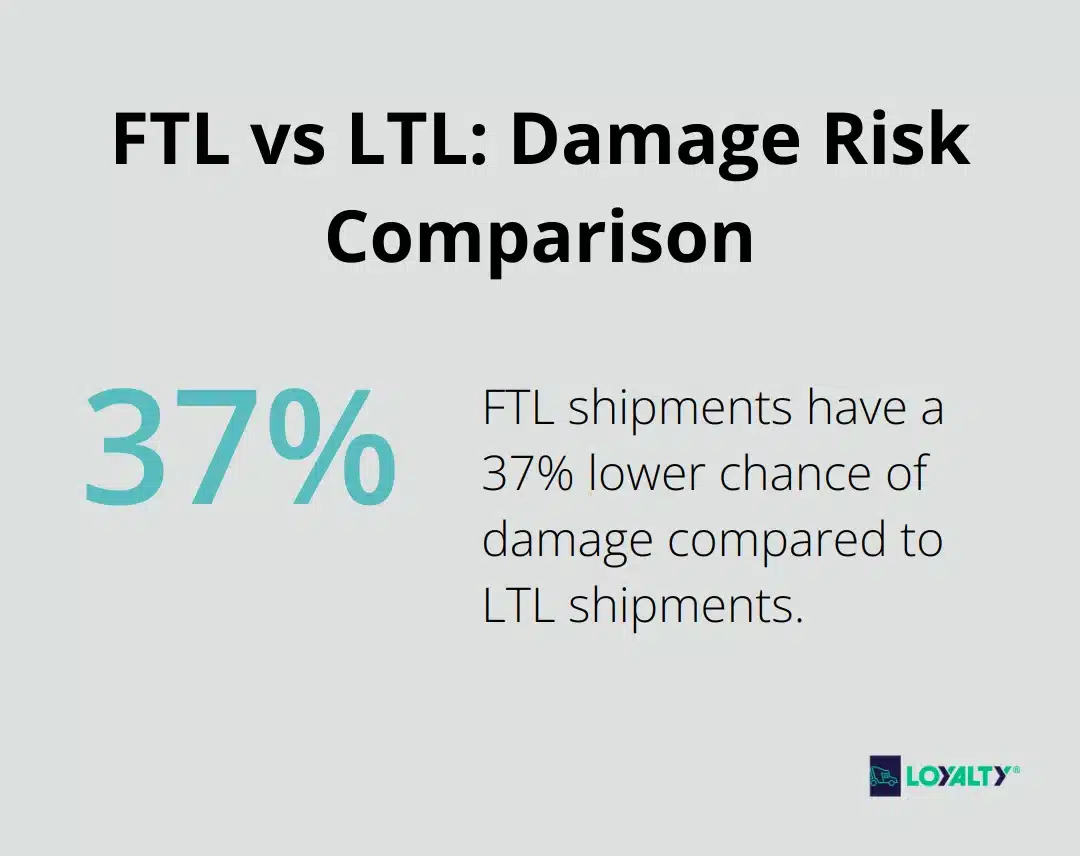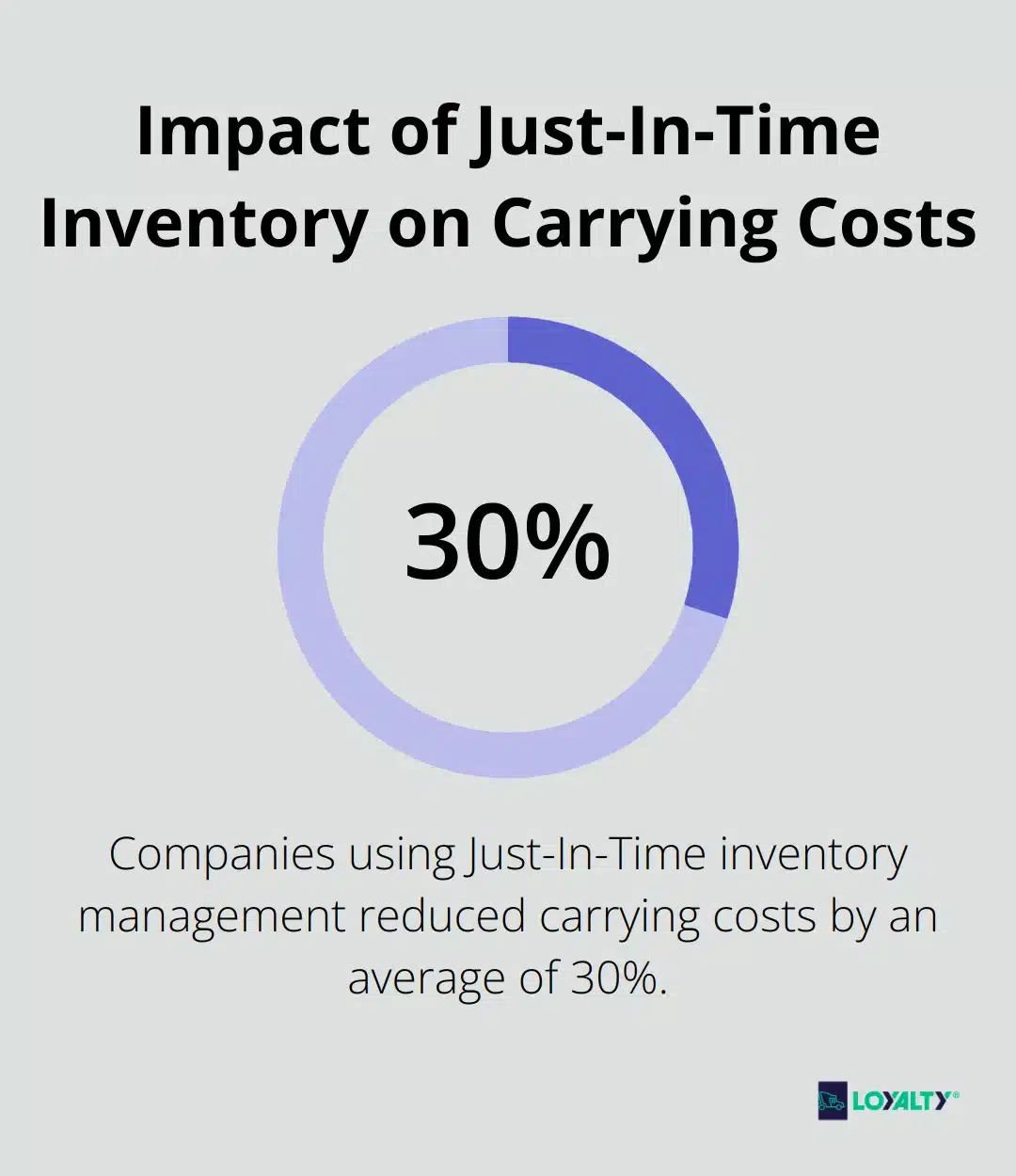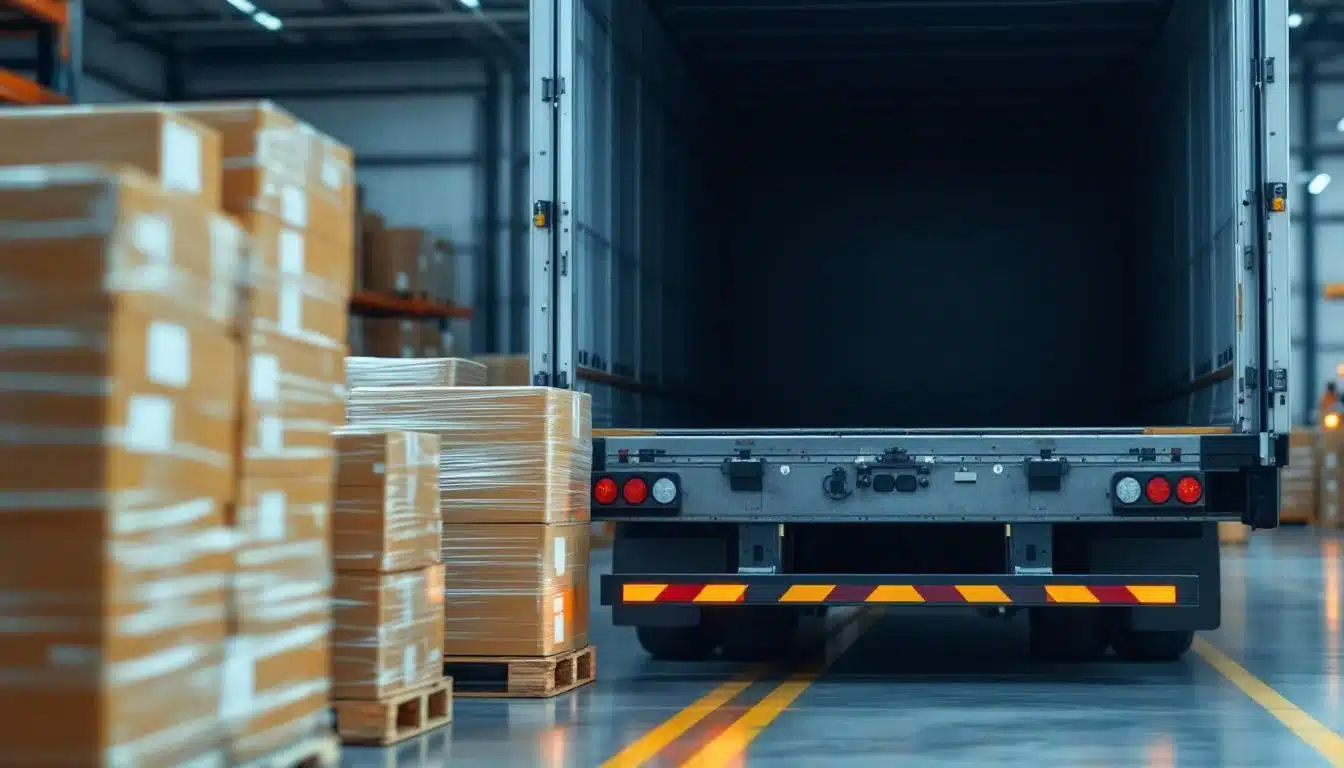Full truck load shipments are a cornerstone of efficient logistics. They offer unique advantages for businesses moving large quantities of goods.
At Loyalty Logistics, we’ve seen firsthand how optimizing these shipments can significantly impact a company’s bottom line. This post will explore practical strategies to maximize the efficiency and cost-effectiveness of your full truck load shipments.
Understanding Full Truck Load (FTL) Shipping
What is Full Truck Load Shipping?
Full Truck Load (FTL) shipping dedicates an entire truck to a single shipment. This method proves ideal for large shipments (typically exceeding 10,000 pounds or filling at least 24 pallets).
Key Features of FTL Shipping
FTL shipments travel directly from origin to destination without intermediate stops or handling. This direct routing cuts transit times and reduces damage risk. A study by the American Transportation Research Institute found that FTL shipments have a 37% lower chance of damage compared to Less Than Truckload (LTL) shipments.

FTL vs LTL: Making the Right Choice
While LTL combines multiple shippers’ goods in one truck, FTL allocates the entire truck to one shipper. This makes FTL more cost-effective for larger shipments. A 2024 logistics industry report showed that FTL can cost up to 30% less per pound than LTL for shipments over 15,000 pounds.
When to Opt for FTL
FTL becomes the preferred choice when:
- Your shipment fills an entire truck
- You move time-sensitive goods
- You transport high-value or fragile items that may require specialized equipment like lowboy trailers
A real-world example illustrates this point: A major electronics retailer switched from LTL to FTL for their cross-country shipments, which reduced transit times by 2 days and cut damage rates by 45%.
Maximizing FTL Efficiency
To optimize FTL shipping:
- Consolidate shipments: Combine multiple orders to fill a truck
- Plan ahead: Book FTL shipments in advance to secure better rates
- Optimize loading: Proper weight distribution can improve fuel efficiency by up to 3%
Many companies have reduced their shipping costs by up to 20% by strategically switching from LTL to FTL for larger shipments.
The Environmental Angle
FTL shipping can prove more eco-friendly. The Environmental Protection Agency reports that FTL shipments produce 28% less CO2 per ton-mile compared to LTL. This aligns well with sustainability initiatives (such as green rewards programs) that many logistics companies now offer.
As we move forward, let’s explore specific strategies to further optimize your FTL shipments and maximize their cost-efficiency.
How to Optimize Full Truck Load Shipments
At Loyalty Logistics, we’ve identified several key strategies to maximize the efficiency of full truck load (FTL) shipments. These methods have helped our clients reduce costs and improve their supply chain performance significantly.
Smart Load Planning
Proper load planning is essential for FTL optimization. A study by the National Private Truck Council found that efficient loading can increase cargo capacity by up to 10%. This means you can ship more goods in fewer trips, which directly impacts your bottom line.
One effective technique is axle loading. This involves the even distribution of weight across the truck’s axles to maximize legal weight limits. For example, a 53-foot trailer can typically carry up to 45,000 pounds when loaded correctly, compared to only 42,000 pounds with poor weight distribution.
Leveraging Technology
Modern logistics software can revolutionize your FTL operations. According to a 2024 report by Gartner, companies that use advanced route optimization software saw an average 15% reduction in miles driven and a 12% decrease in fuel costs.
These systems consider factors like traffic patterns, weather conditions, and delivery windows to determine the most efficient routes. They can also help you avoid empty miles (a major cost drain in FTL shipping).
Just-In-Time Inventory Management
The implementation of Just-In-Time (JIT) inventory practices can dramatically improve your FTL efficiency. A survey by the Council of Supply Chain Management Professionals found that companies using JIT reduced their inventory carrying costs by an average of 30%.

JIT involves the coordination of deliveries to arrive precisely when needed, which reduces warehouse costs and improves cash flow. However, it requires careful planning and reliable shipping partners to succeed.
Choosing the Right Equipment
The selection of the appropriate truck type for your cargo is vital. For instance, the use of a reefer truck for non-temperature-sensitive goods wastes fuel and increases costs unnecessarily. On the other hand, the use of a dry van for goods requiring temperature control can lead to spoilage and significant losses. Selecting the right refrigerated trucking companies becomes crucial for these shipments.
A range of truck types (including refrigerated, reefer, flatbeds ans step deck trailers) allows for the match of the right equipment to your specific cargo needs, which optimizes both cost and cargo protection.
The implementation of these strategies can enhance the efficiency of your FTL shipments significantly. The regular review and adjustment of your approach based on data and performance metrics is key to maintaining peak efficiency in your FTL operations. Now, let’s explore how you can maximize cost-efficiency in FTL shipping to further optimize your logistics operations.
How to Cut Costs in FTL Shipping

Master Rate Negotiation
Successful rate negotiation with carriers can significantly reduce Full Truck Load (FTL) shipping costs. A 2024 study by the American Transportation Research Institute found that shippers who regularly negotiate rates pay an average of 8% less than those who don’t. Research current market rates thoroughly. Tools like DAT’s RateView provide real-time freight rate information, which gives you a solid baseline for negotiations.
Consider multi-year contracts with your most reliable carriers. These agreements often come with volume discounts (potentially saving you up to 15% on shipping costs). Include clauses that allow for rate adjustments based on significant market changes.
Working with experienced freight brokers can provide valuable market insights for better negotiations.
Consolidate Shipments
Shipment consolidation can dramatically reduce costs. The National Shippers Strategic Transportation Council reports that companies implementing effective consolidation strategies can cut transportation costs by up to 25%.
Identify opportunities to combine shipments going to the same region. This might require slight adjustments to your shipping schedule, but the cost savings often outweigh the minor inconvenience. Some companies partner with other businesses in their area to share FTL shipments, splitting the costs while still benefiting from FTL rates.
For international shipments, understanding cross-border shipping requirements is essential for FTL optimization.
Improve Fuel Efficiency
Reducing fuel consumption directly leads to cost savings. The North American Council for Freight Efficiency states that implementing fuel-efficient practices can lower fuel costs by up to 10%.
Optimize truck speed to improve fuel economy. Studies show that reducing speed from 75 mph to 65 mph can improve fuel economy by up to 27%. Encourage your carriers to use speed governors and provide incentives for fuel-efficient driving.
Regular maintenance of trucks is another crucial factor. Well-maintained vehicles consume less fuel. Some logistics companies offer discounts for carriers who maintain their fleets to high standards, which can lead to lower overall shipping costs.
Minimize Detention and Accessorial Charges
Detention and accessorial charges can quickly increase your shipping budget. A report from the American Trucking Associations reveals that detention time costs trucking companies over $1 billion annually, a cost often passed on to shippers.
To reduce these charges, improve your loading and unloading processes. Invest in efficient dock management systems and train your staff to handle trucks quickly. Some companies have reduced detention charges by up to 50% by implementing appointment scheduling systems for truck arrivals.
Communicate proactively with your carriers about potential delays or special handling requirements. Clear communication can help avoid unexpected accessorial charges (which can add up to 10% to your shipping costs if not managed properly).
Collaborative shipping offers a powerful way to reduce emissions and costs simultaneously. This approach combines shipments from multiple shippers, maximizing truck utilization and minimizing empty miles.
Final Thoughts
Full truck load shipments require strategic planning and attention to detail for optimal efficiency. Smart load planning, advanced technology, and Just-In-Time inventory practices can significantly enhance FTL operations. Mastering rate negotiations, consolidating shipments, and improving fuel efficiency will maximize cost-effectiveness in your logistics processes.
The logistics industry constantly evolves, so businesses must adapt to new technologies and stay informed about trends. Small improvements applied consistently across operations can lead to substantial savings (up to 20% in some cases). Regular analysis of FTL shipping processes will help maintain peak efficiency and competitiveness in the market.
Ready to start saving on your FTL shipments? Loyalty Logistics has helped companies reduce shipping costs by up to 20% through strategic optimization. Our logistics experts are ready to create a customized solution for your business.



